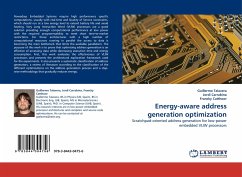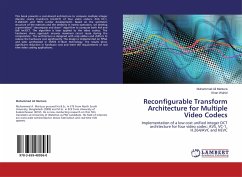
Performance & Power Impact of Multiple DRAM Address Mapping Schemes
The Performance and Power Impact of Using Multiple DRAM Address Mapping Schemes in Multicore Processors
Versandkostenfrei!
Versandfertig in 6-10 Tagen
32,99 €
inkl. MwSt.

PAYBACK Punkte
16 °P sammeln!
Lowest-level cache misses are satisfied by the main memory through a specific address mapping scheme that is hard-coded in the memory controller. A dynamic address mapping scheme technique is investigated to provide higher performance and lower power consumption, and a method to throttle memory to meet a specific power budget. Several experiments are conducted on single and multithreaded synthetic memory traces -to study extreme cases- and validate the usability of the proposed dynamic mapping scheme over the fixed one. Results show that applications performance varies according to the mapping...
Lowest-level cache misses are satisfied by the main memory through a specific address mapping scheme that is hard-coded in the memory controller. A dynamic address mapping scheme technique is investigated to provide higher performance and lower power consumption, and a method to throttle memory to meet a specific power budget. Several experiments are conducted on single and multithreaded synthetic memory traces -to study extreme cases- and validate the usability of the proposed dynamic mapping scheme over the fixed one. Results show that applications performance varies according to the mapping scheme used, and a dynamic mapping scheme achieves up to 2x increase in peak bandwidth utilization and around 30% higher energy efficiency than a system using only a single fixed scheme Moreover, the technique can be used to limit memory accesses into a subset of the memory devices by controlling data allocation at a finer granularity, providing a method to throttle main memory by allowing un-accessed devices to be put into power-down mode, hence saving power to meet a certain power budget.












